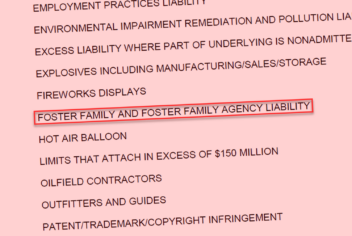Motor vehicle crashes are the leading cause of unintentional workplace deaths in the United States. The statistics are staggering. Every eight seconds someone is seriously injured on our roadways and someone is killed every 15 minutes. New preliminary data from the National Safety Council estimates that as many as 40,000 people died in motor vehicle crashes in 2016, a six percent rise from 2015. If those numbers are confirmed, it would be a 14 percent increase in deaths since 2014 — the biggest two-year jump in more than five decades!
Although you cannot control the actions of other drivers, you, your employees and your volunteers can develop defensive driving skills that will help avoid the dangers caused by other people’s poor driving behavior.
- Drive Defensively. Be aware of what other drivers are doing and expect the unexpected. Maintain a two-to-three second cushion between you and the vehicle in front of you.
- Pay Attention. Avoid distractions when driving. Never use a cell phone behind the wheel – not even hands-free. The National Safety Council states: “Research shows the brain remains distracted for 27 seconds after dialing, changing music, or sending a text using voice commands.” Pre-set the navigation system and music playlists before driving.
- Slow Down. Speeding reduces how much time a driver has to react in an emergency situation to avoid a crash. According to the National Highway Traffic Safety Administration, it was a factor in 27 percent of all traffic deaths in 2015. Allow plenty of time to reach your destination and adjust speed as needed for weather conditions.
- Yield the Right of Way. Drivers must often make quick decisions about who has the right of way and when to yield. Remember, the right of way should always be given and it’s not something a driver should take for granted. When two or more drivers approach a situation where someone is supposed to yield right of way, all drivers should be prepared to yield. Whoever has the last clear chance to avoid a collision has an obligation to do so.
- Use Caution When Passing. Be careful to accurately estimate the time and space needed to safely pass the vehicle in front without interfering with any other vehicles in the vicinity. Always use turn signals to indicate intentions. When passing, especially at night, a driver should be able to see both headlights of the vehicle being passed in the rearview mirror before moving back into the original travel lane.
Individuals driving on behalf of your organization, whether in an agency-owned vehicle or a personal vehicle, should be exercising caution and using good judgment while driving. Every driver is ultimately responsible for controlling his or her vehicle to avoid a collision with another vehicle, object or person. A defensive driver can avoid crashes and help lower their risk behind the wheel.





